

|
Habitat & Interactions with others |
|
Late blight, the disease caused by Phytophthora infestans can grow wherever potatoes are grown, yet is most destructive in cool weather and wet conditions (Marshall 1995).
|
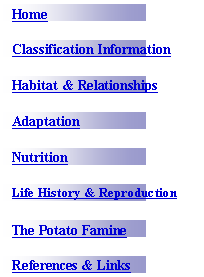
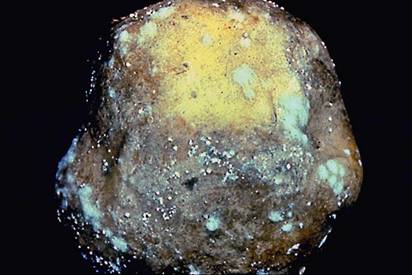
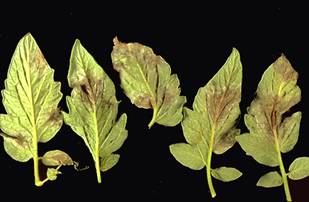
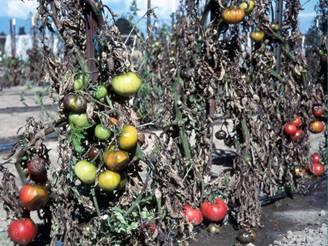
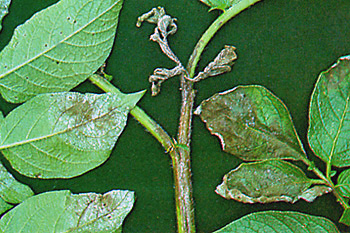
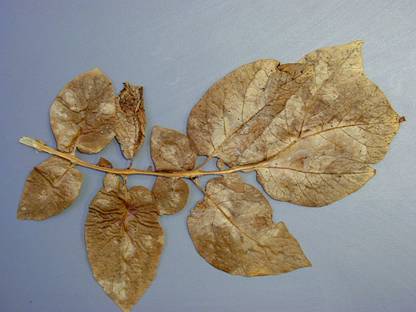
|
P. infestans is a plant pathogen and can be considered necrotrophic parasite—a very host specific one at that. It mainly grows in the tissues of potato plants and tomato plants, as well as other organisms in the family Solanaceae, but also can grow in petunias (Judelson 1997). |
|
Phytophthora infestans sporulation (white areas) on potato tuber (1). |
|
Photo Credits 1. Courtesy H. D. Thurston. Reproduced with permission from Schumann, G. L. and C. J. D’Arcy. 2000. Late blight of potato and tomato. The Plant Health Instructor. DOI: 10.1094/PHI-I-2000-0724-01. 2. Courtesy T. Zachman. Reproduced with permission from Schumann, G. L. and C. J. D’Arcy. 2000. Late blight of potato and tomato. The Plant Health Instructor. DOI: 10.1094/PHI-I-2000-0724-01. 3. Courtesy T.J. Volk. Reproduced with permission from T.J. Volk. 2001. Phytophthora infestans, cause of late blight of potato and the Irish potato famine. 4. Courtesy J. P. Jones. Reproduced with permission from Schumann, G. L. and C. J. D’Arcy. 2000. Late blight of potato and tomato. The Plant Health Instructor. DOI: 10.1094/PHI-I-2000-0724-01. 5. Courtesy D. Inglis, copyright-free. Reproduced with permission from Schumann, G. L. and C. J. D’Arcy. 2000. Late blight of potato and tomato. The Plant Health Instructor. DOI: 10.1094/PHI-I-2000-0724-01. |
|
Leaves and stems infected with Phytophthora infestans. Note sporulation (white areas) on leaf surface (2). |
|
Infected potato leaf (3). |
|
Sporulation (white areas) on lower surface of tomato leaves with late blight (4). |
|
Blighted tomato plants in a field setting with infected fruit (5). |